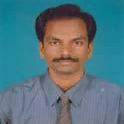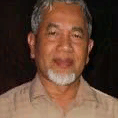International Journal of Image, Graphics and Signal Processing (IJIGSP)
IJIGSP Vol. 4, No. 3, 8 Apr. 2012
Cover page and Table of Contents: PDF (size: 476KB)
Sine Cosine Taylor Like Technique for Connected Component Detector by ICNN Simulation
Full Text (PDF, 476KB), PP.28-34
Views: 0 Downloads: 0
Author(s)
Index Terms
Improved Cellular Neural Network, Sine Cosine Taylor Like Technique, Connected Component Detector, Ordinary Differential Equations
Abstract
Sine cosine Taylor like technique is employed to carry out connected component detector (CCD) simulation under improved cellular neural network (ICNN) architecture to yield better accuracy for hand written character and image recognition system. The principal simulation results reveal that this technique performs well in comparison with other techniques.
Cite This Paper
S.Senthilkumar, Abd Rahni Mt Piah,"Sine Cosine Taylor Like Technique for Connected Component Detector by ICNN Simulation",IJIGSP,vol.4,no.3,pp.28-34,2012. DOI: 10.5815/ijigsp.2012.03.05
Reference
[1]Chua, L.O., Yang, L.: "Cellular Neural Networks: Theory", IEEE Transactions on Circuits and Systems, Vol. 35, pp. 1257-1272, 1988.
[2]Chua, L.O., Yang, L.: "Cellular Neural Networks: Applications", IEEE Transactions on Circuits and Systems, Vol. 35, pp. 1273-1290, 1988.
[3]Roska et al.: CNNM Users Guide, Version 5.3x, Budapest, Hungary, 1994.
[4]Roska, T., K´ek, L.: Analogic CNN Program Library; Version 6.1, Budapest, Hungary, 1994.
[5]Roska, T., Nossek, J. (ed.): "Special Issue on Cellular Neural Networks". IEEE Trans. Circuits and Systems I and II, Vol. 40, 1993.
[6]Roska, T.: CNN Software Library, Hungarian Academy of Sciences, Analogical and Neural Computing Laboratory, 2000[Online].Available: http://lab.analogic.sztaki.hu/ Candy/csl.html, 1.1
[7]Harrer, H., Schuler, A., Amelunxen, E.: " Comparison of different numerical integration methods for simulating cellular neural networks", IEEE International Workshop on Cellular Neural Networks and their Applications, pp. 151-159, 1990.
[8]Nossek, J.A., Seiler, G., Roska, T., Chua, L.O.: "Cellular Neural Networks: Theory and Circuit Design" , International Journal of Circuit Theory and Applications, Vol. 20, pp. 533-553, 1992.
[9]Chua, L.O., Roska, T.: "The CNN Universal Machine Part 1: The Architecture", in Int. Workshop on Cellular Neural Networks and their Applications (CNNA), pp. 1-10, 1992.
[10]Seiler, G.: "A Cascade of Bifurcation in a Family of Cellular Neural Networks", Report TUM-LNS-TR-90-5, Technical University of Munich, Archisstr, 21, D-800, Munich,Vol. 20, pp. 533–553, 1990.
[11]Gonzalez, R.C., Woods, R.E., Eddin, S.L.: Digital Image Processing using MATLAB, Pearson Education Asia, Upper Saddle River, N.J, 2009.
[12]Espejo, S., Domínguez-Castro, R., Carmona, R., Rodríguez-Vázquez, A.: "A Continuous Time Cellular Neural Network Chip for Direction Selectable connected Component Detection with Optical Image Acquisition", Fourth International Conference on Microelectronics for Neural Networks and Fuzzy Systems (MICRONEURO'94), pp. 383-391, Turin, Italy, September 1994.
[13]Civalleri, P.P, Gilli, M.: "Global Dynamic Behaviour of a Three-Cell Connected Component Detector CNN", International Journal of Circuit Theory and Applications, Volume 23, Issue 2, pp. 117–135, March/April 1995.
[14]Cruz, J.M., Chua, L.O.: "A CNN Chip for Connected Component Detection", lEEE Transactions on Circuits and Systems, Vol. 38, No. 7, JULY 1991, pp. 812-817.
[15]Matsumoto, T., Yokohama, T., Suzuki, H., Furukawa, R.: "Several Image Processing Examples by CNN", Proc. IEEE International Workshop on Cellular Neural Networks and their Applications, Budapest, Hungary, pp. 100-111, 1990.
[16]Matsumoto, T., Chua, L.O. and Suzuki, H.: "CNN Cloning Template Connected Component Detector:", IEEE Transactions on Circuits and Systems, Vol. 37, No. 5, pp. 633–635, 1990.
[17]Chen, H.C., Hung, Y.C., Chen, C.K., Liao, T.L., Chen, C.K.: "Image-Processing Algorithms Realized by Discrete-Time Cellular Neural Networks and Their Circuit Implementations", Chaos, Solutions & Fractals, Vol. 29, pp. 1100-1108, 2006.
[18]Feng, Q., Yu, S., Wang, H.: "A New Automatic Nucleated Cell Counting Method with Improved Cellular Neural Networks", (ICNN), IEEE 2006 10th International Workshop on Cellular Neural Networks and Their Applications, pp.1-4, 2006.
[19]Murugesh, V., Murugesan, K.: "Simulation of Cellular Neural Networks Using RK-Butcher Algorithm", International Journal of Management Systems, Vol. 21, pp. 64-78, 2005.
[20]Senthilkumar, S.: "New Embedded Runge-Kutta Fourth Order Four Stage Algorithms for Raster and Time-Multiplexing Cellular Neural Networks Simulation", Ph.D. Thesis, Department of Mathematics, National Institute of Technology [REC], Tiruchirappalli, Tamilnadu, INDIA, 2009.
[21]Ponalagusamy, R., Senthilkumar, S.: "A New Fourth Order Embedded RKAHeM(4,4) Method with Error Control for Multilayer Raster Cellular Neural Network", Signal Image Video Processing, Vol. 3, pp. 1-11, 2009.
[22]Ponalagusamy, R., Senthilkumar, S.: "Investigation on Time-Multiplexing Cellular Neural Network Simulation by RKAHeM(4,4)Technique", International Journal of Advanced Intelligence Paradigm , Vol. 3, pp. 43 - 66, 2011.
[23]Ahmad, R., Yaacob, N.: "Sin-Cos-Taylor-Like Method for Solving Stiff Ordinary Differential Equations", Journal of Fundamental Sciences, pp. 34-43, 2005.
[24]Ahmad, R., Yaacob, N.: "Explicit Taylor-Like Method for Solving Stiff Differential Equations", Technical Report LT/M Bil.3/2004, 2004.
[25]Ahmad, R., Yaacob, N.: "Explicit Sine-Taylor-Like Method for Solving Stiff Differential Equations",Technical Report LT/M Bil.8/2004, 2004.
[26]Butcher, J.C.: The Numerical Analysis of Ordinary Differential Equations, John Wiley & Sons, U.K, 2003.
[27]Butcher, J.C.: "On Runge Processes of Higher Order", Journal of Australian Mathematical Society, Vol. 4. pp. 179, 1964.
[28]Butcher, J.C.: "The Numerical Analysis of Ordinary Differential Equations: Runge-Kutta and General Linear Methods", John Wiley & Sons, U.K, 1987.
[29]Press, W.H., Flannery, B.P., Teukolsky, S.A., Vetterling, W.T.: "Numerical Recipes: The Art of Scientific Computing", Cambridge University Press, New York, 1986.
[30]Burrage, K., Petzold, L.: "On Order Reduction for Runge-Kutta Methods Applied to Differential Algebraic Systems and to Stiff Systems of ODEs", SIAM Journal of Numerical Analysis, Vol. 27, pp. 447-456, 1990.
[31]Bader, M.: "A Comparative Study of New Truncation Error Estimates and Intrinsic Accuracies of Some Higher Order Runge-Kutta Algorithms", Computers & Chemistry, Vol. 11, pp. 121-124, 1987.
[32]Bader, M.: "A New Technique for the Early Detection of Stiffness in Coupled Differential Equations and Application to Standard Runge-Kutta Algorithms", Theoretical Chemistry Accounts, Vol. 99, pp. 215-219, 1998.
[33]Oliveira, S.C.: "Evaluation of Effectiveness Factor of Immobilized Enzymes using Runge-Kutta-Gill Method: How to Solve Mathematical Undetermination at Particle Center Point?", Bio Process Engineering, Vol. 20, pp.185-187, 1999.

